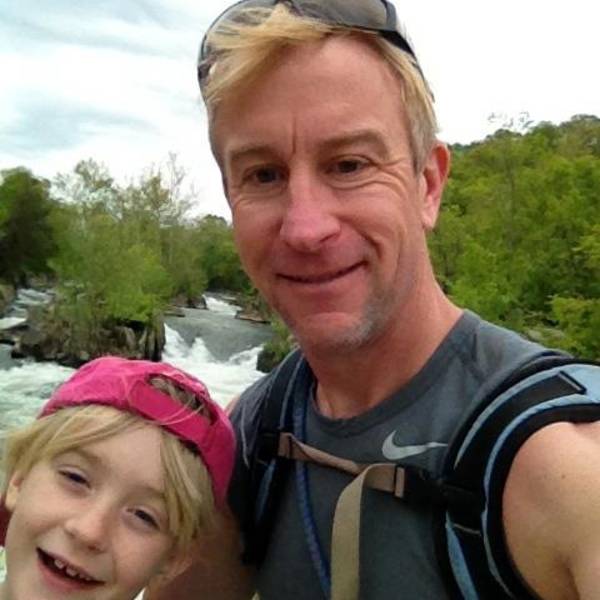EPA wants stricter standards to regulate the toxin ozone—but it could be a tough fight to enact these life-saving protections.
As our understanding of air pollution evolves, so does the U.S. government’s responsibility to regulate these dangers. According to new findings by an independent panel of scientists, some of the microscopic toxins in our air have the potential to harm both people and parks at lower levels than we once believed.
The U.S. Environmental Protection Agency (EPA) must regularly set standards for a number of pollutants that are especially harmful for public health and the environment, as mandated through the Clean Air Act, raising a key question.
How much pollution is too much?
In late December, the EPA released its recommendations for regulating ozone, one of the most pervasive air pollutants in the United States. A byproduct of combustion, ozone is a colorless, odorless gas that forms when emissions from vehicle tailpipes, power plants, chemical plants, and factories mix in the sunlight. Ozone contributes to a number of health and environmental problems, including lung irritation, asthma attacks, difficulty breathing, damage to plant life, and hazy skies. Children, seniors, and asthmatics are particularly susceptible, but even healthy adults can suffer from exposure. A stricter ozone standard could reduce the overall number of premature deaths, emergency room visits, and asthma attacks throughout the country, and it would contribute to healthier park ecosystems.
The EPA is seeking public comment on two proposed ozone standards. One focuses on ozone’s impacts to human health and the other on its impacts to plants and wildlife.
First, let’s consider health. Contrary to what many people might believe, unhealthy air is not just a problem in urban areas. Every summer, thousands of park visitors seeking healthful outdoor recreation are potentially at risk from unnecessary exposure to this ozone pollution. In 2014 alone, Joshua Tree National Park exceeded current ozone standards an astounding 75 times, while Sequoia and Kings Canyon National Parks exceeded the ozone standard even more frequently—nearly 100 times. Fortunately most national parks don’t experience so many violations, but days with high ozone pollution do regularly occur in parks like Acadia, Shenandoah, Great Smoky Mountains, Cape Cod, Yosemite, and Rocky Mountain.
EPA is proposing three options for the ozone health standard. One would keep the pollutant at current levels (75 parts per billion), one would reduce ozone levels to a stricter and healthier threshold (60 parts per billion), and one would set the standard somewhere in the middle (60-70 parts per billion).
NPCA is urging the EPA to impose the strictest of its three proposed standards (60 parts per billion)—a level the agency’s panel of independent scientists believe would greatly reduce harm to people. If EPA adopts a strict ozone standard of 60 parts per billion, as supported by the health and medical community, 1.8 million asthma attacks and 7,900 premature deaths could be prevented each year, beginning in 2025.
Now, let’s consider plants and wildlife. The truth about ozone—and many other toxins—is that humans react differently to exposure than other species do. The way that ozone burns a plant’s leaves, stunts its growth, and makes it susceptible to disease is different from how it inflames the lining of a person’s throat and lungs. And a quaking aspen—one key species affected by ozone—can’t just go indoors when air quality is bad. Plants and wildlife need their own standard, measured with a different model, to protect them from irreversible damage.
For these reasons, EPA has rightfully proposed a separate ozone standard to protect plants and animals. Unfortunately, EPA’s proposal does not follow the advice of the agency’s independent science panel—allowing more than three times as much pollution as it recommended (in fact, the scientists’ report says EPA’s preferred level of pollution is “unacceptably high”).
It’s not going to be an easy process. Already, some politicians are aiming to undermine any change to the ozone standard—even though the EPA is mandated by federal law to update these regulations in accordance with the best available science. Members of the House and Senate are planning to introduce companion bills that would prohibit the EPA from changing the current ozone standard until 85 percent of the counties that currently do not meet the standard are in compliance. These bills would therefore reward states for delaying life-saving improvements, putting people, plants, and parks at risk.
My colleague Don Barger, NPCA’s Southeast regional director, once talked about how the approach to regulating air quality has changed significantly since he began working on the issue in the 1990s. “When I first started, we were regulating soot,” he explained. “If it wasn’t black and you didn’t see it, it wasn’t air pollution. If I had to clean it off my car, it was air pollution. Our knowledge progressed over the years to the point where we realized that a whole lot of what’s most dangerous about air pollution is not only the stuff we see, but a lot of things we can’t.”
We must reduce these invisible dangers that put our lungs and our environment at risk.
About the author
-
 Mark Wenzler Former Senior Vice President of Conservation Programs
Mark Wenzler Former Senior Vice President of Conservation ProgramsMark oversees NPCA’s programs focused on protecting and restoring the air, lands, water, and wildlife in our national parks. He is an avid outdoor recreationist who loves to ski, bike, backpack and paddle, especially in our national parks.


